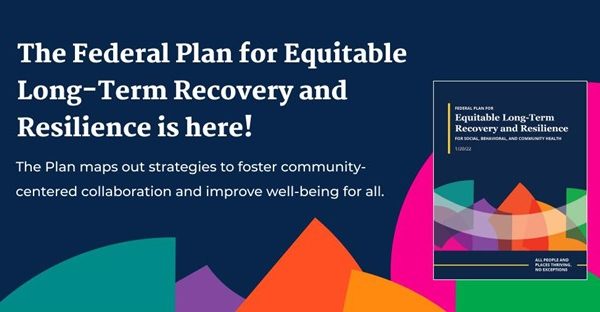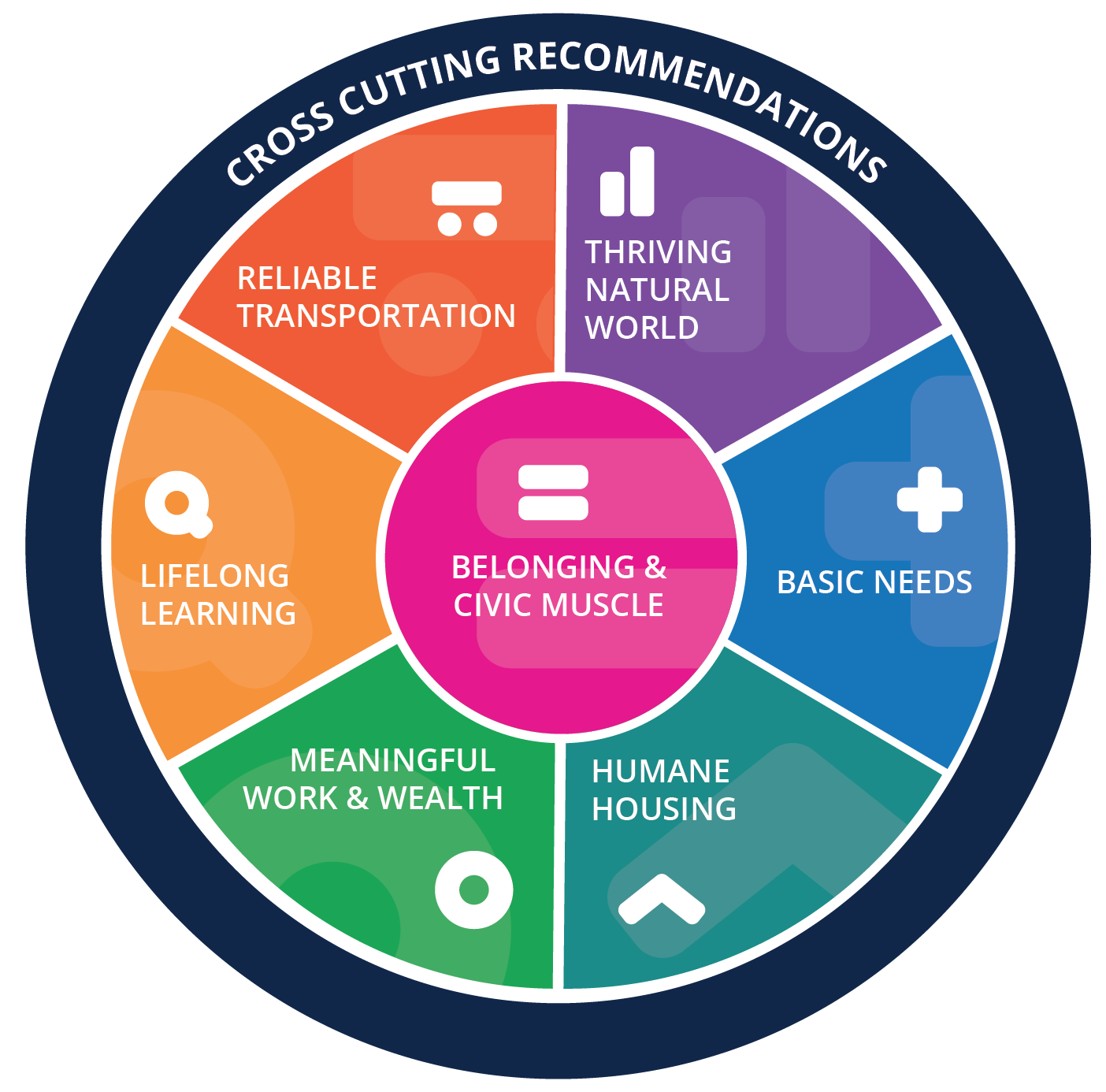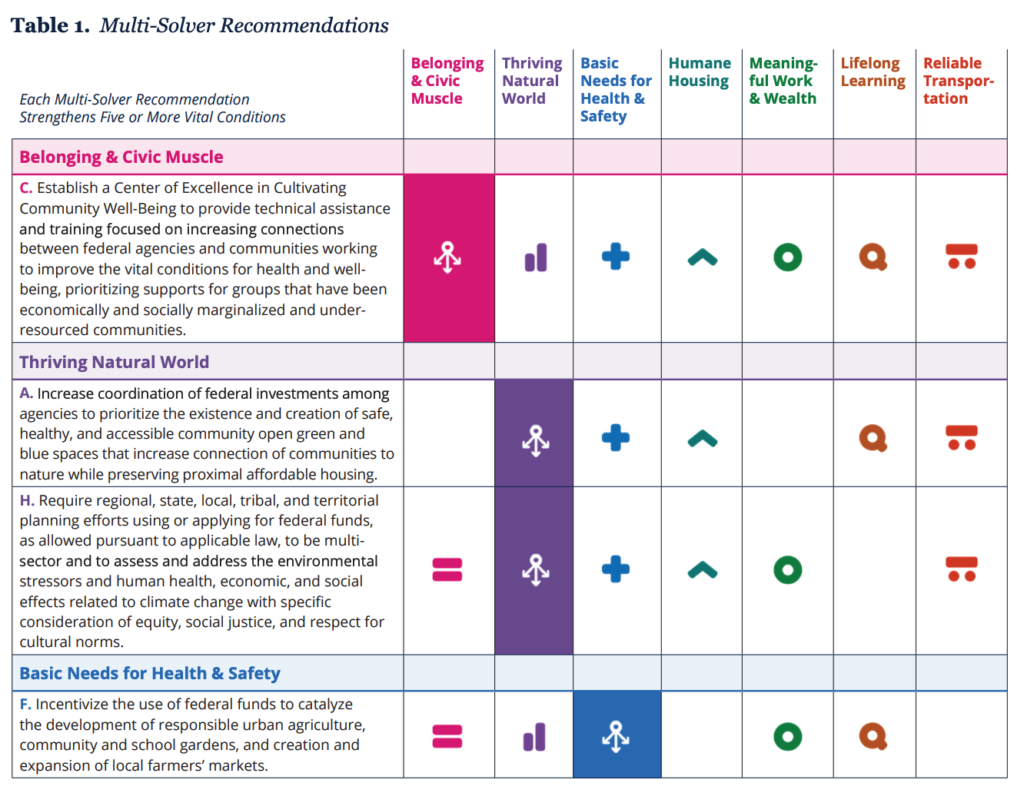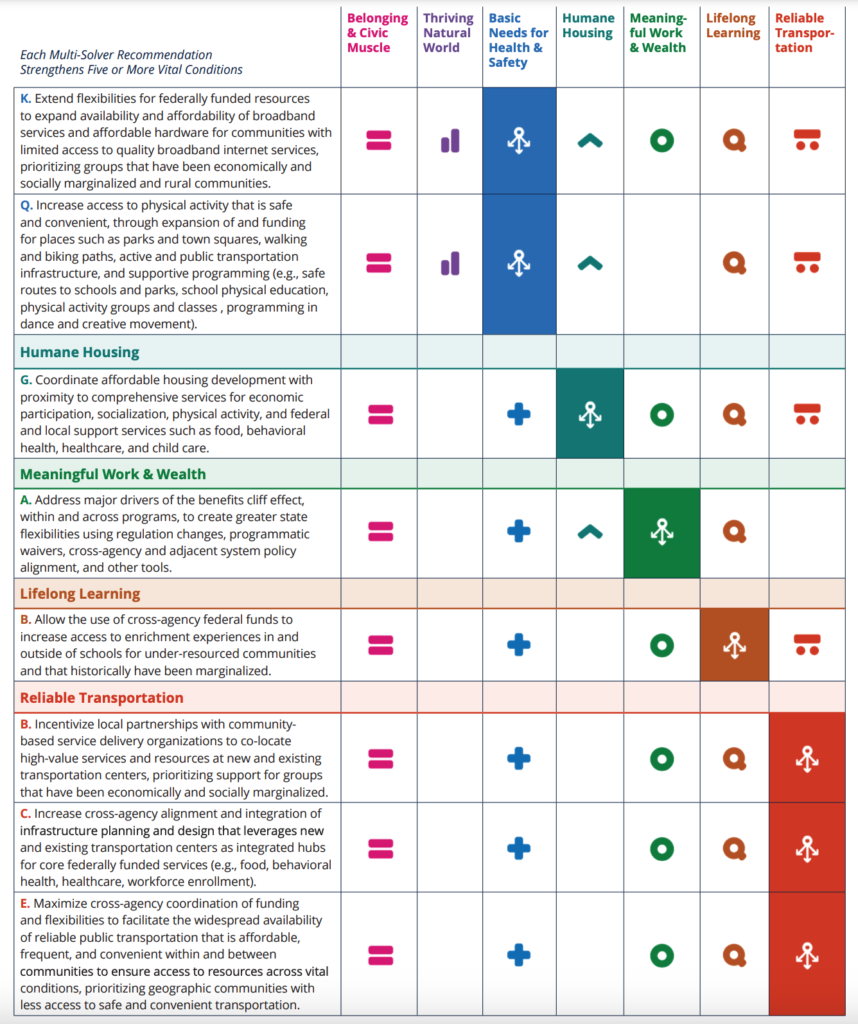The Federal Plan for Equitable Long-Term Recovery and Resilience (ELTRR) outlines a whole-of-government approach to unlock America’s full potential for all people and places to thrive together – no exceptions. With commitments from more than 35 agencies, it is a landmark in America’s movement for well-being and equity.
This interagency plan was designed from its inception to be a governmental counterpart to the Thriving Together Springboard. It reflects a shared commitment to bring the thriving together ethos to life, including an affirmation that our capacity to expand belonging and civic muscle is at the center of this work.
The Federal Plan recommendations arose from years of persistent effort by dedicated professionals who work in dozens of federal agencies, spanning both Republican and Democratic administrations. Their desire to break from business-as-usual is inspiring, but fragile. Their aspirations must be converted into action; and the rest of us – all of us who work outside of government – must do our part to make the most of this moment for aligned action.

The following sections are excerpts from the The Federal Plan for Equitable Long-Term Recovery and Resilience. Explore the full Federal Plan and all 78 recommendations here.
The Federal Plan calls for a transformational systemic change in federal government through the following actions:
- Align all relevant federal government departments and agencies to strengthen the vital conditions for health and well-being
- Foster community-centered collaboration within and outside of government to ensure an equitable, thriving future
- Maximize steady-state and other federal investments within current agency authority to strengthen systems that enable resilience and well-being
- Achieve equity and aspire to eliminate disparities by focusing sustained whole-of-government resources on communities that have been historically marginalized or disadvantaged
The Federal Plan provides a skeleton upon which all federal agencies can strengthen their respective and collective body of work. The Federal Plan is aligned with existing and emerging federal priority efforts and multiple executive orders and presidential memos related to equity, recovery, and resilience.
The Federal Plan’s framework has potential to serve as a lasting bridge for all of these efforts toward achieving increased resilience, equity, and thriving for all communities and individuals.

Equity and Enhanced Individual and Community Resilience Are Integral to a Meaningful Recovery
Building resilience happens within individuals and in community with others — predominantly at a local level but arguably up to a global level. The hyperlocal level is where we leverage our own personal capabilities and most directly and routinely interact with our community network. It’s where our decisions most affect us in personal terms and affect others in terms of civility — and where our life circumstances most significantly influence our choices.
Rethinking Government Partnerships
The release of the Federal Plan offers an opportunity for stewards across the country to rethink how they collaborate with government agencies. Now is the time to reach out to local, state, and federal partners to explore new ways of working and learning together.
Federal partners offer more than funding and may be resources for any of these potential levers (pg. 25, Figure 5):

Communication & Educational Campaigns

Data/Surveillance

Funding (e.g., grants, cooperative agreements, Medicaid-billing)

Guidelines & Recommendations

Planning

Policy (e.g., waivers and flexibilities)

Regulations (i.e., rules and directives)

Research/ Evaluation

Strategic Partnerships

Training/
Technical Assistance (TA)

Staffing/
Services
Federal Plan Recommendations
The Federal Plan presents 78 recommendations for consideration and action, organized by the seven vital conditions and a cross-cutting category. Ten cross-cutting recommendations reflect actions that transcend the vital conditions and have the potential to uniformly align federal assets to equitable foster well-being.
The recommendations aim to fundamentally refocus how the federal government collectively functions in service of communities. Taken together, they must:
- Incentivize and support meaningful cross-agency collaboration in policy and program design and implementation to strengthen vital conditions and promote thriving for all.
- Increase opportunities to engage in equitable, community-driven assessments of needs and solutions.
- Expand avenues for communities to optimally access federal support.
With these themes in mind, federal agencies can act on the recommendations by adopting a new, integrated application of federal assets to enhance communities’ ability to self-define needs and access relevant resources with the goal of building equitable resilience.

Cross-Cutting Recommendations
10 cross-cutting recommendations reflect actions that transcend the vital conditions and have the potential to transform alignment of federal assets to better serve the well-being of communities and populations historically left behind.
These recommendations focus on changes to steady-state infrastructure that enhance federal services, in support of making community-led efforts and whole-person approaches the expectation and the norm. Recommendations will be most effective when integrated into the regular process for policy and regulation development, program design and implementation, and funding across federal agencies.
10 Recommendations
- Increase Use of the Vital Conditions Framework in Federal Resources
- Adopt Coordinated Language in Notice of Funding Opportunity (NOFO) Announcements
- Demonstrate Continuous Community-Led Planning and Design
- Allow Federal Funds to Facilitate Multi-Sector Collaboration
- Establish Infrastructure to Enable Meaningful Interagency Collaboration
- Facilitate Regional Knowledge Exchange and Collaborative Action
- Incentivize Co-Location and Coordinated Access Points for Complementary Federally Funded and Administered Services in Naturally Occurring and Community-Driven Settings
- Redesign Interagency Technical Assistance to Increase Equitable Access to Federal Resources
- Strengthen Measurement Practices to Increase Collection of Data Measuring Equity and Well-Being
- Integrate Arts and Cultural Programs into Core Resilience Resources Across Agencies
Multi-Solvers
A subset of recommendations – referred to as “multi-solvers” – impact five or more vital conditions. These recommendations may represent areas to prioritize during early implementation. Each recommendation includes detailed starting points as actions for implementation based on existing steady-state agency assets and authorities.



Redressing existing system failures in a sustainable manner will require an all-of-government and all-of-society commitment to a community-based focus on equitable health and well-being.
Federal Plan
